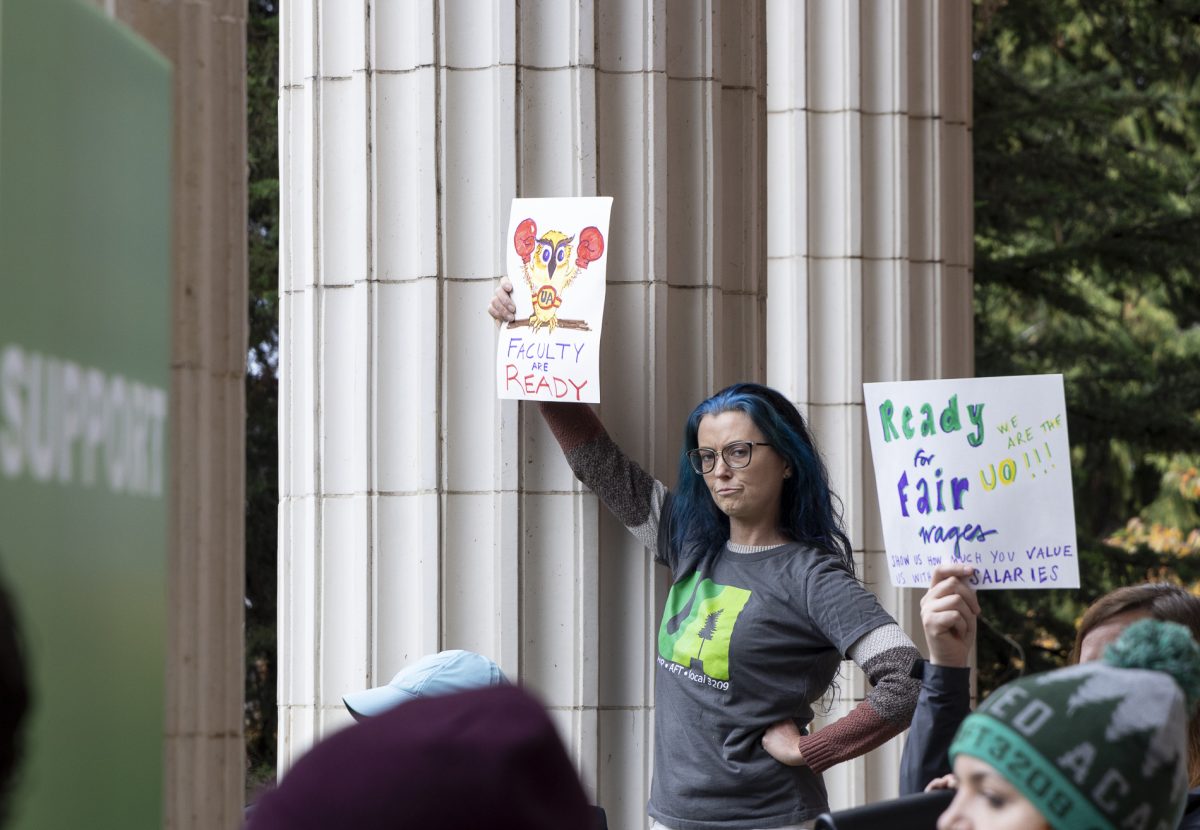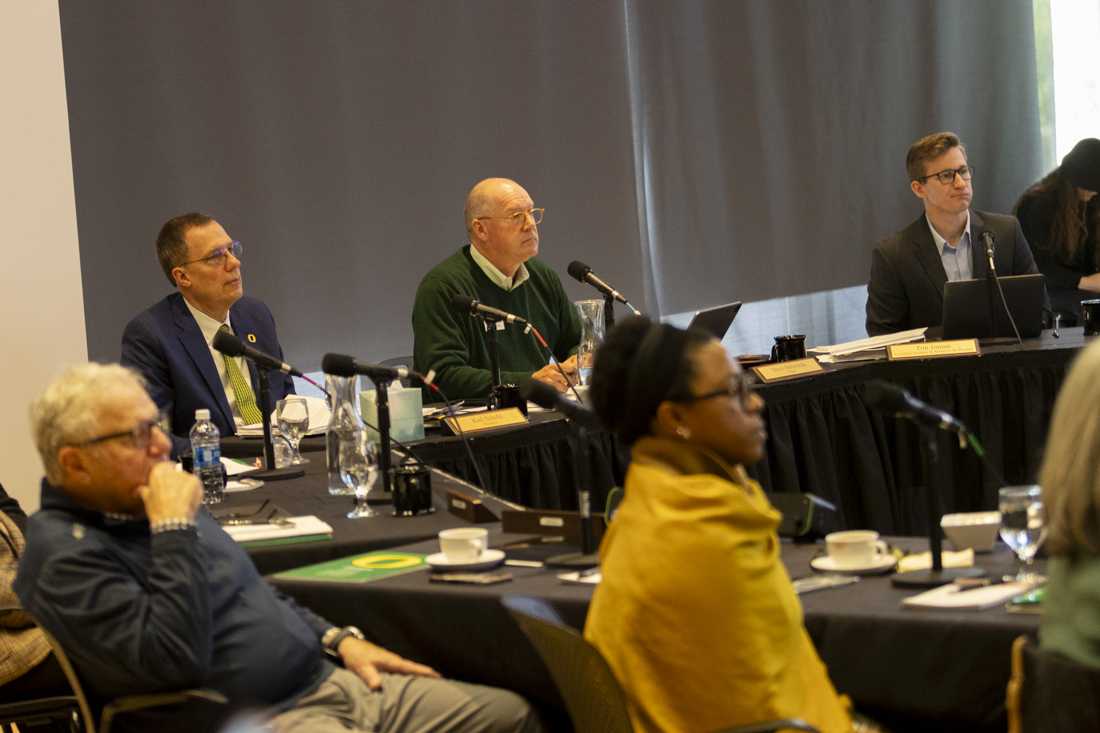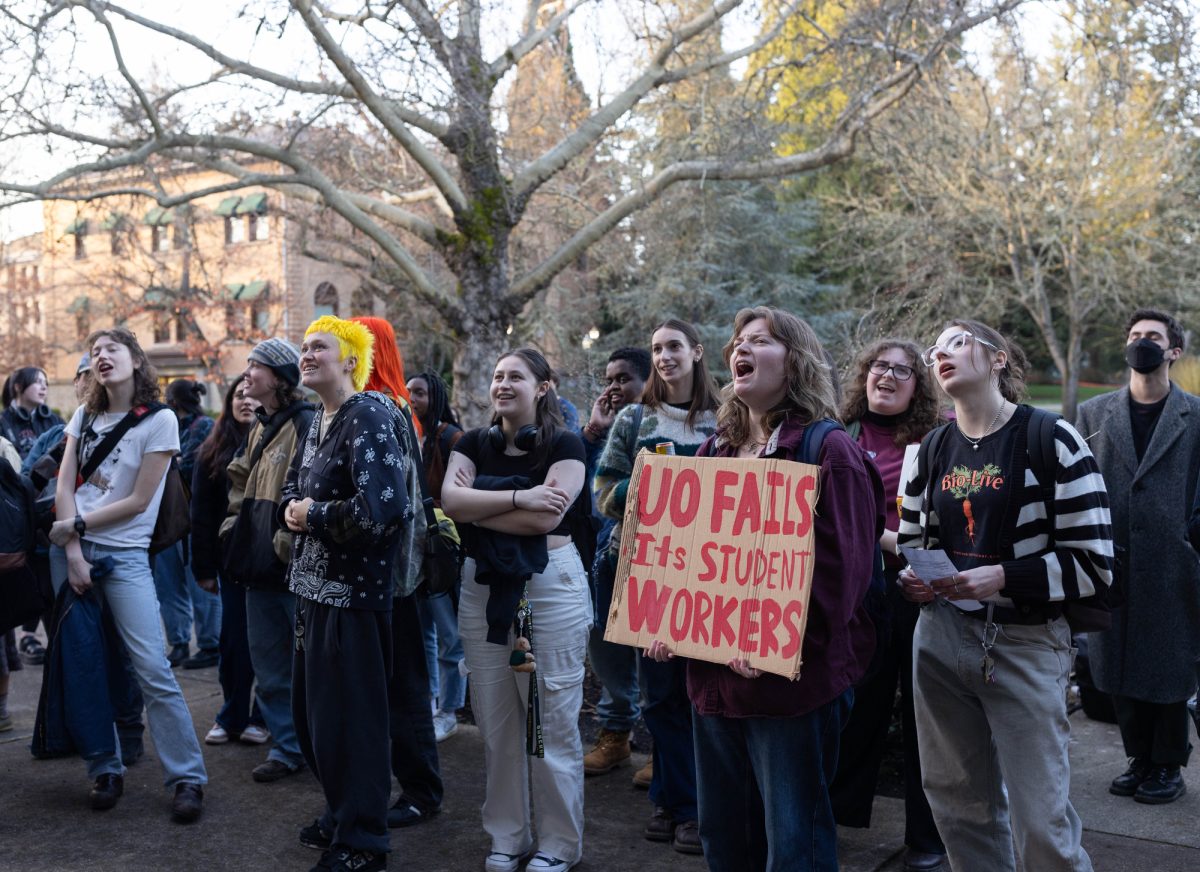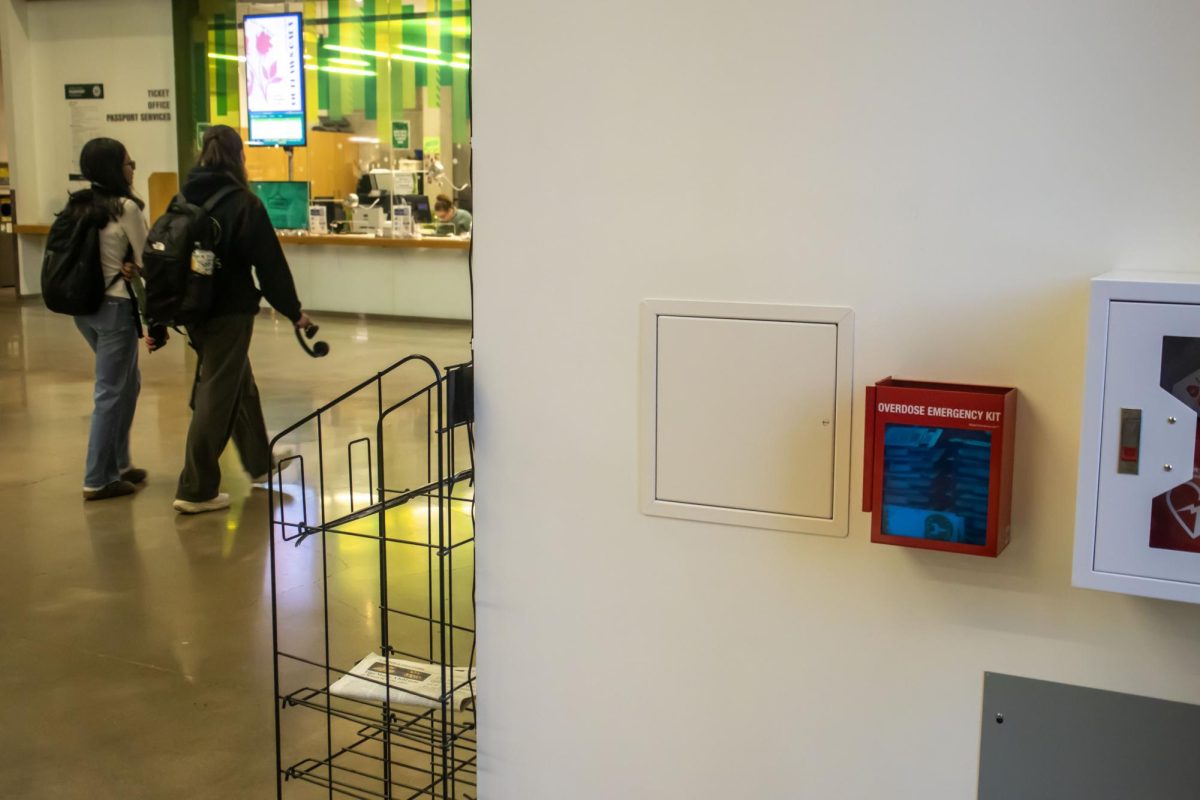Unthank Hall Dining has all different types of food, including a market with both premade meals and ingredients if you want to cook for yourself. (Molly McPherson/Emerald)
Micah Warren, an associate professor of mathematics at the University of Oregon, has taught for UO for the past ten years. According to Warren, buying on-campus food now is the most expensive it has ever been. Warren asks, “At what cost?”
At UO, there are five meal plans first-year students can choose from. The “Deluxe” meal plan includes 95 points per week and $50 Duck Bucks per term, making it the meal plan with the highest amount of points.
There are four dining halls where students can get food, as well as eatery options within the EMU. These options include restaurants like Jamba Juice, Chipotle, Little Big Burger, Panda Express, Bartolotti’s, Subway and Ace Sushi along with a grab-and-go market.
Warren says he eats on campus about two to three times a week out of his five-day workweek at UO. He says over time the cost of food has increased, but his salary hasn’t, making it difficult to keep up with the prices.
“It seems like they’re just kind of adding numbers and just seeing how much we can pay,” he said.
He said he realized it most drastically when he came back from summer break.
“I noticed that some of the UO Dining food prices jumped,” he said. “For example, the bowl I often get downstairs at the EMU jumped from $10.95 to $12.95 – almost 20%.”
In the grab-and-go market, or the Fresh Corner Market, which Warren is referring to, the prices of everyday items can be found below.
-
Blueberry Oatmeal – $3.95
-
Nature’s Bakery Bar – $1.65
-
Avocado – $2.00
-
General Fruit – $1.00
For the standard meal plan, students get 80 points per week but are unable to use them in the EMU dining areas. At these locations, they can use Duck Bucks, which they get $50 per term or about 10 weeks.
After surveying students randomly in the EMU, all have said they are unsure who sets the prices in the EMU market.
“It seems like there are a few companies who are just raising prices arbitrarily and saying ‘Well you know inflation’ just to see how far they can go before consumers stop buying the product and many of these corporations are also experiencing record profits,” Warren said.
Tom Driscoll, UO director of dining services, said that price changes are in response to changes in expenses.
“We have seen significant increases in raw food costs this past year, as reflected in national inflation data,” he said. “We also have significant increases in labor expenses, particularly among our student staff.”
Beginning in July of 2023, UO agreed to increase the student dining worker wages to $15.95 per hour. According to Driscoll, these changes are a factor when increasing food prices.
“For example, catering is currently paying students $15.95 to $16.95 an hour, plus bonuses of $200 to $500,” he said. “UO Catering does not charge a gratuity percentage to customers, which industry-wide is typically 15-20% and automatically included by most other caterers.”
At UO, retention bonuses are given to student workers at the beginning and end of the term if an employee works a certain amount of hours during welcome week and finals week. This would bring the wages up to $16.95.
Noah Thompson, a fifth-year student worker in the central kitchen, said the prices within the dining halls is too high, especially for the working students in these dining halls.
“This is an especially serious issue given the disproportionately high rates of food insecurity that UO students have faced historically,” Thompson said.
Thompson is a member of the UO Student Worker Union and said that free shift meals, a benefit that used to be available to workers, was cut out making it even more inaccessible for low income students to get food affordably.
“Of course, there are tangible material costs that go into food service, but UO is a public institution— it’s not supposed to run for profit in the same way a restaurant needs to,” he said. “UO has an obligation to its students and staff to provide food— a fundamental human need and right— at a fair and accessible price.”
According to the UO Erb Memorial Union website, 22.1% of students were food insecure in the years 2020-21 which was double the national rate of 10.5%.
“To Mr. Driscoll’s comment, I’d just say that UO is a multimillion-dollar public institution, with an obligation to fulfill its community’s basic needs and compensate its workers fairly— those two things are not at odds and shouldn’t be treated like they are,” Thompson said.











